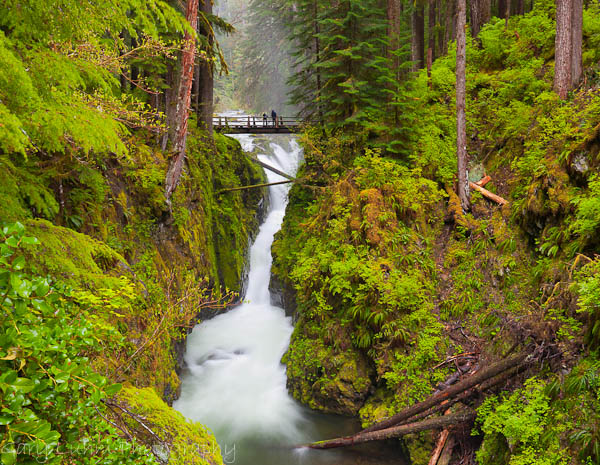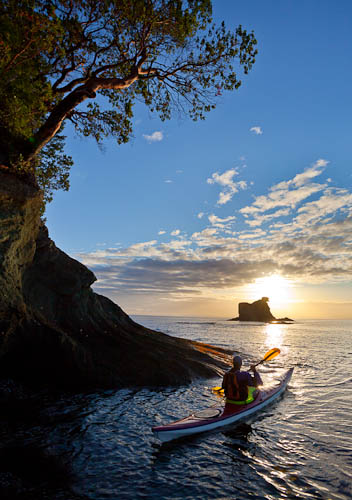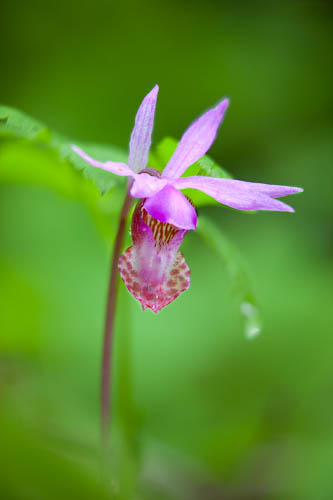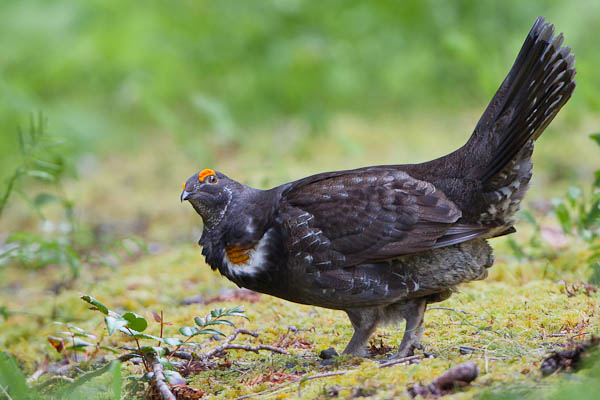
June, Olympic Peninsula, WA. With cool, wet weather dampening photography more than usual in our cool, wet NW climate, playing the weather plays a bigger than normal role in photographic outcomes. I’ve struck out often this spring trying to get saleable photos—clouds block the sun, backgrounds vanish in fog, rain ends a photo session. The whether as well as the where of an outdoor shoot depends on weather. A few weeks ago I let the forecast drive the shoot, and designed an accommodating overnight trip to the Olympic Peninsula.Washington State weather forecasts are seriously better than they were just 10 years ago. A correct read on local weather can make or break a shoot.
Northwest climate is generally mild, but with a simple corollary: Seattle is the cloudiest major city in the USA, tough if you need a blue sky to sell photos. Then we have the disadvantage of sitting on the Pacific Ocean, without ground-level weather stations offshore to fine tune developing conditions. Remarkably, we lack a radar station on the coast (Stimulus money may yet remedy this). Washington’s only radar station is on Camano Island. It can look out at the Strait of Juan de Fuca, but its Pacific view is significantly blocked by the Olympic Mountains. Our forecasters rely mostly on satellite data.

The Coastal Mountains and the Cascade Range complicate forecasting, but they also create opportunity for photography. Cloud cover and rain vary locally as low pressure cells push around and over the barriers. High pressure cells frequently blow wind hard through the passes.
My main source for forecasts is The Weather Channel. I have The Weather Channel Desktop (free download) on my computer, where it informs me every morning. An icon on my bottom taskbar tells me the local outdoor temperature and has the effect of connecting me to the outside even while I’m pounding away on the keyboard. If I’m heading for the coast, or kayaking in Puget Sound, I check the Washington Marine Forecast . If I’m going to Mt. Rainier, I check the Mt. Rainier Recreational Forecast. Locally useful tools similar to these can be found at NOAA for the US. For NW residents, another useful tool is the Cliff Mass weather blog. Cliff’s blog is useful for understanding the weather—for getting under the hood to better understand weather conditions.

Before deciding on my Olympic overnight, I debated other short trips, checking forecasts for Bellingham (north), Friday Harbor (in the rain shadow of the Olympic Mountains), Moses Lake (eastside of the Cascades, and Port Angeles (north of the Olympics on the Strait of Juan de Fuca). There’s much to shoot in June; nesting birds everywhere, Orca in the San Juans, tidepooling on the twice-monthly spring tides, forest wildflowers, even seasonal cityscape shots like the Seattle downtown from Kerry Park. Flexibility is key. For my overnight Olympic trip, the forecast for Port Angeles was showers in the evening, clearing at night, partly cloudy in the morning, and then cloudy returning with showers by mid-day. North toward Bellingham it was rain in the morning; and east of the Cascades, the forecast was clouds. So I set my schedule: shoot Solduc Falls west of Port Angeles and in Olympic National Park that evening, do a kayak shoot on the Strait of Juan de Fuca with the dawn, and then head up the Elwha River (also in Olympic NP) and search for Calypso Orchids. If the forecast proved true, the trip design could be a triple winner. Photography in the forest is best in overcast light; a good sunrise sells kayak photos and scenics. I set out for Solduc in early afternoon, a four-hour drive from Kirkland.
The shoot went off pretty much as planned. Solduc Falls looked fine despite premature drizzle. In the morning, the sunrise lacked color, but I found a good foreground and got marketable shots. Still early in the morning, I headed into Olympic National Park, driving up the Elwha River road. My first, low-elevation look for Calypso Orchids was a bust—too late in the spring. But I drove to the Elwha road end, hiked two miles to the camp near the Olympic Hotsprings, and—at this higher elevation—found a dozen or so Orchids scattered along the trail toward Appleton Pass. As a bonus, on the way down I drove by a displaying Sooty Grouse. They’re tame birds when testosterone-charged, and this bird was strutting about, air sacs inflated. I pushed the ISO to 1600 to get the shot, but the Canon 5D II and a 500mm f/4 handled it well.

With a less aggressive weather analysis, I probably would have postponed a trip and stuck to the office. With unsettled spring weather, a match of conditions to situation is a foundation for successful shoots.
Gary